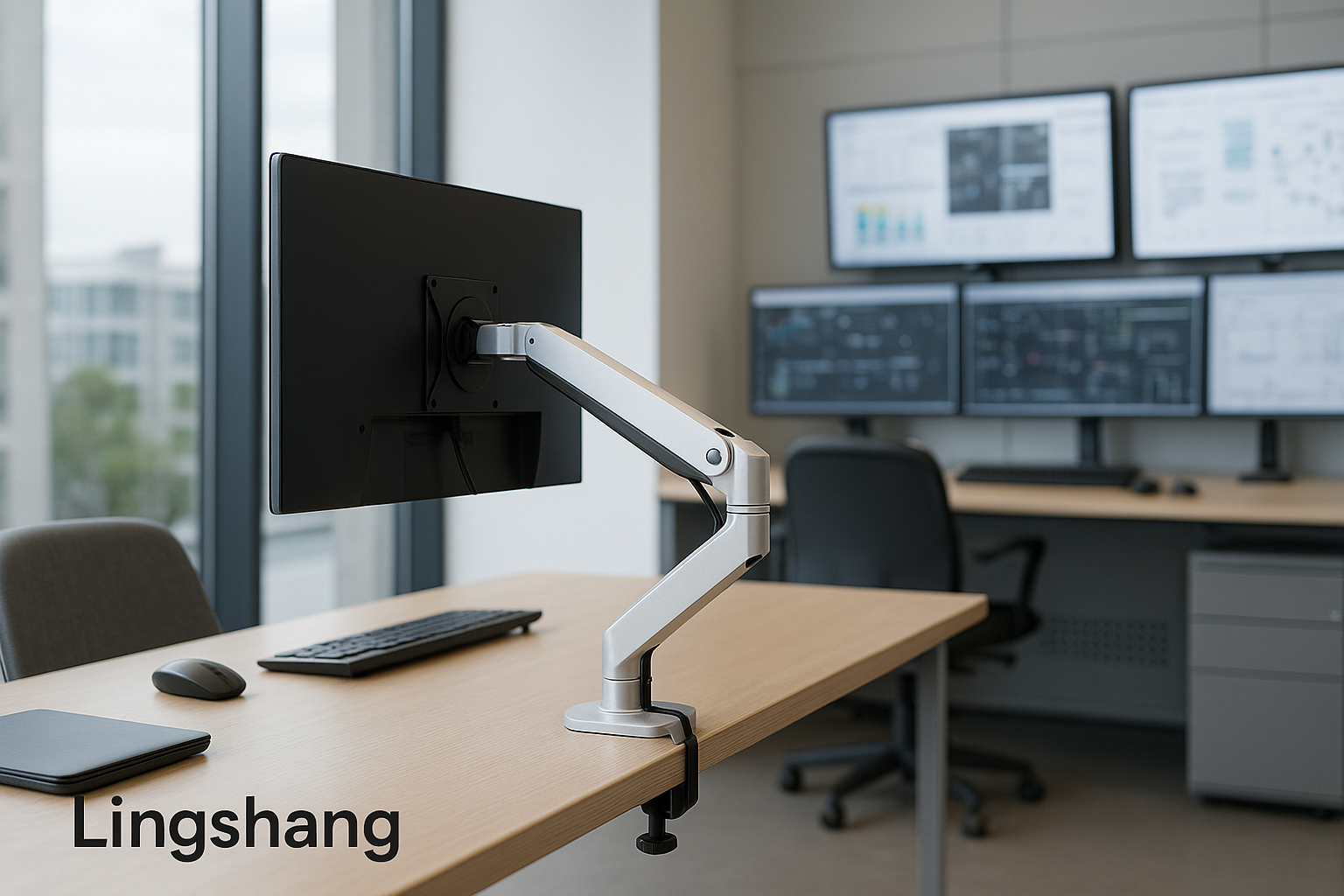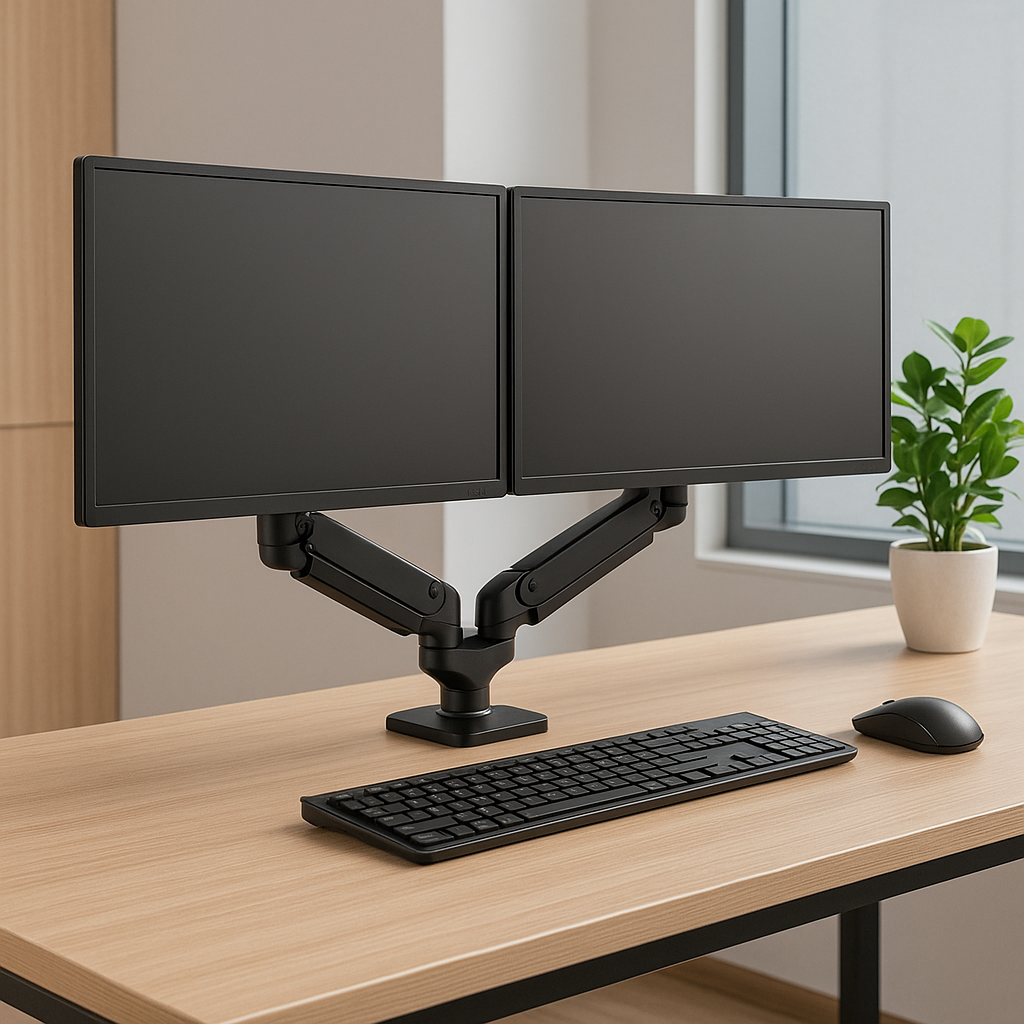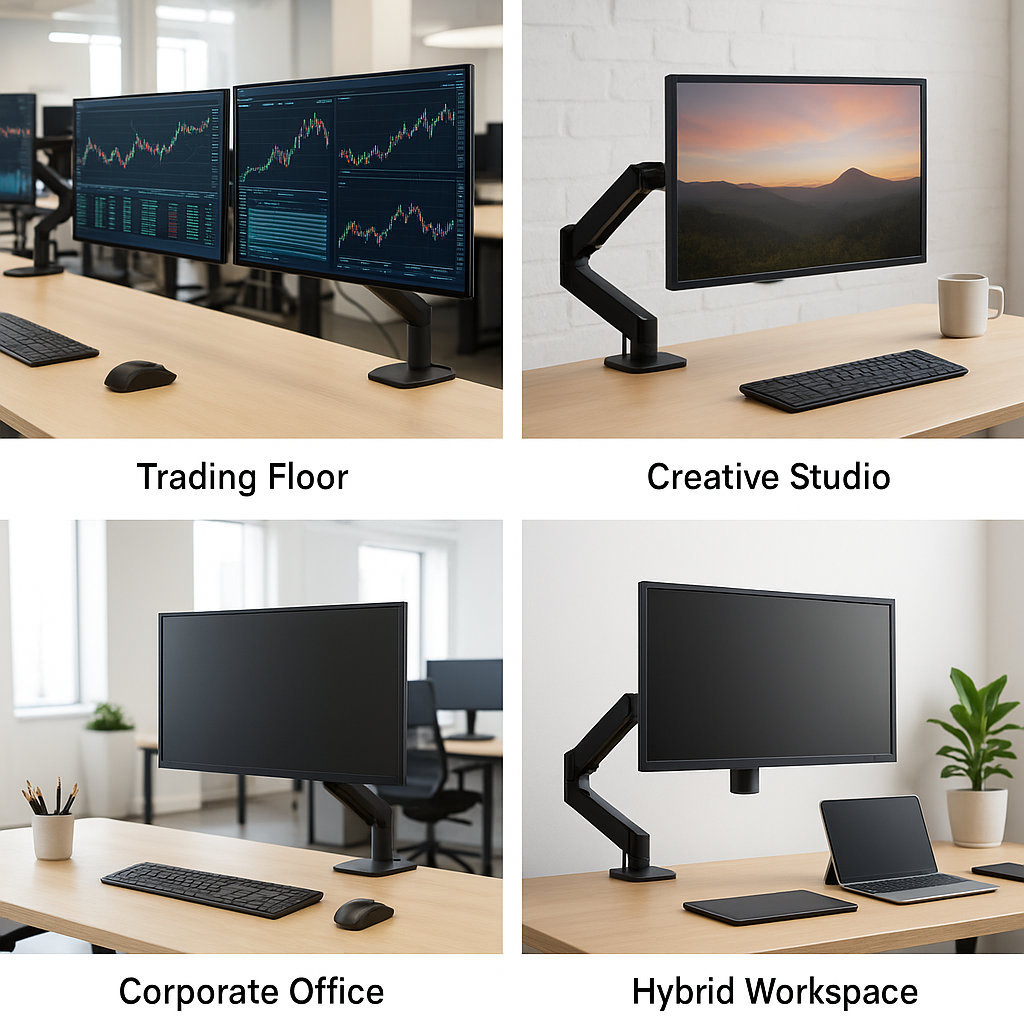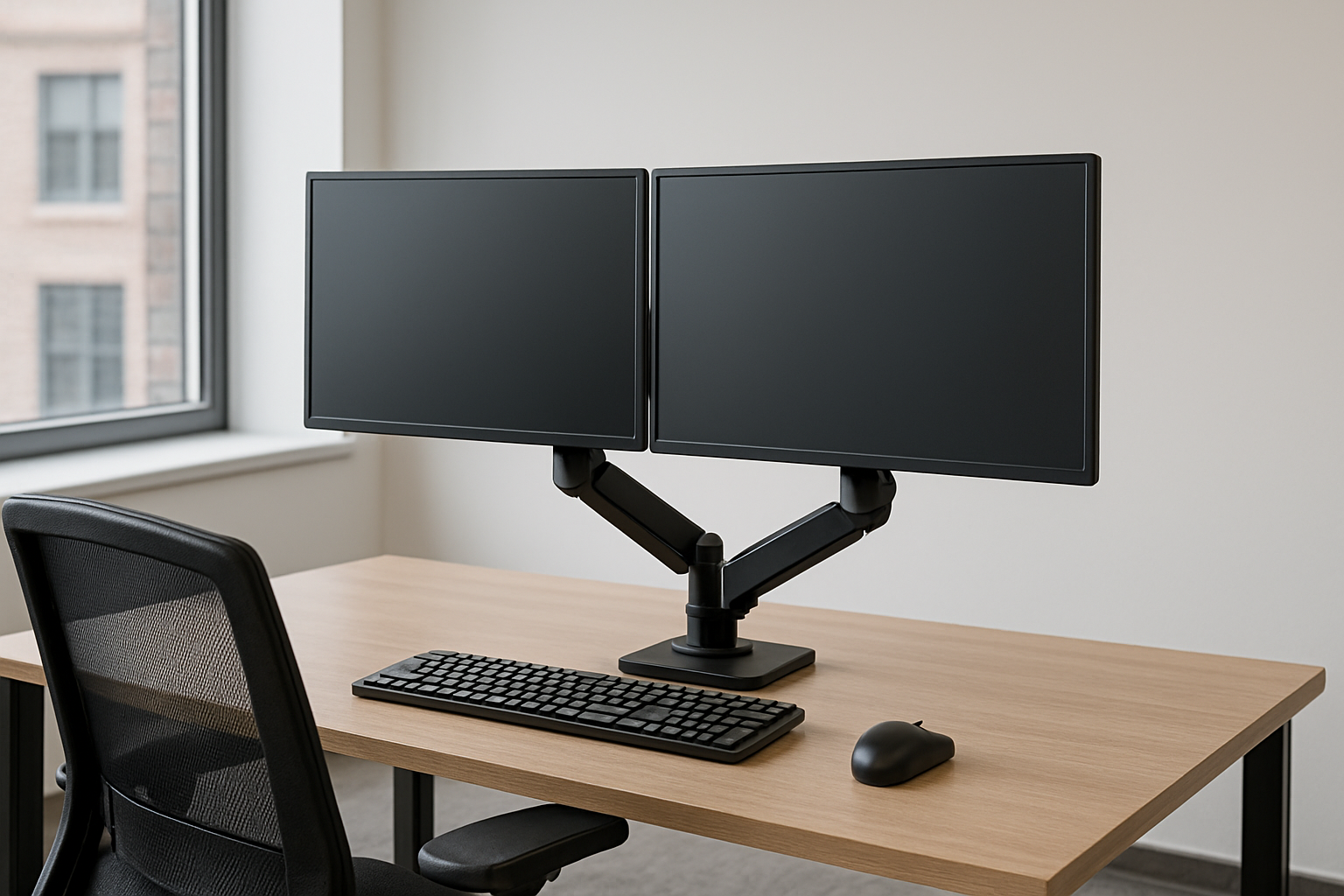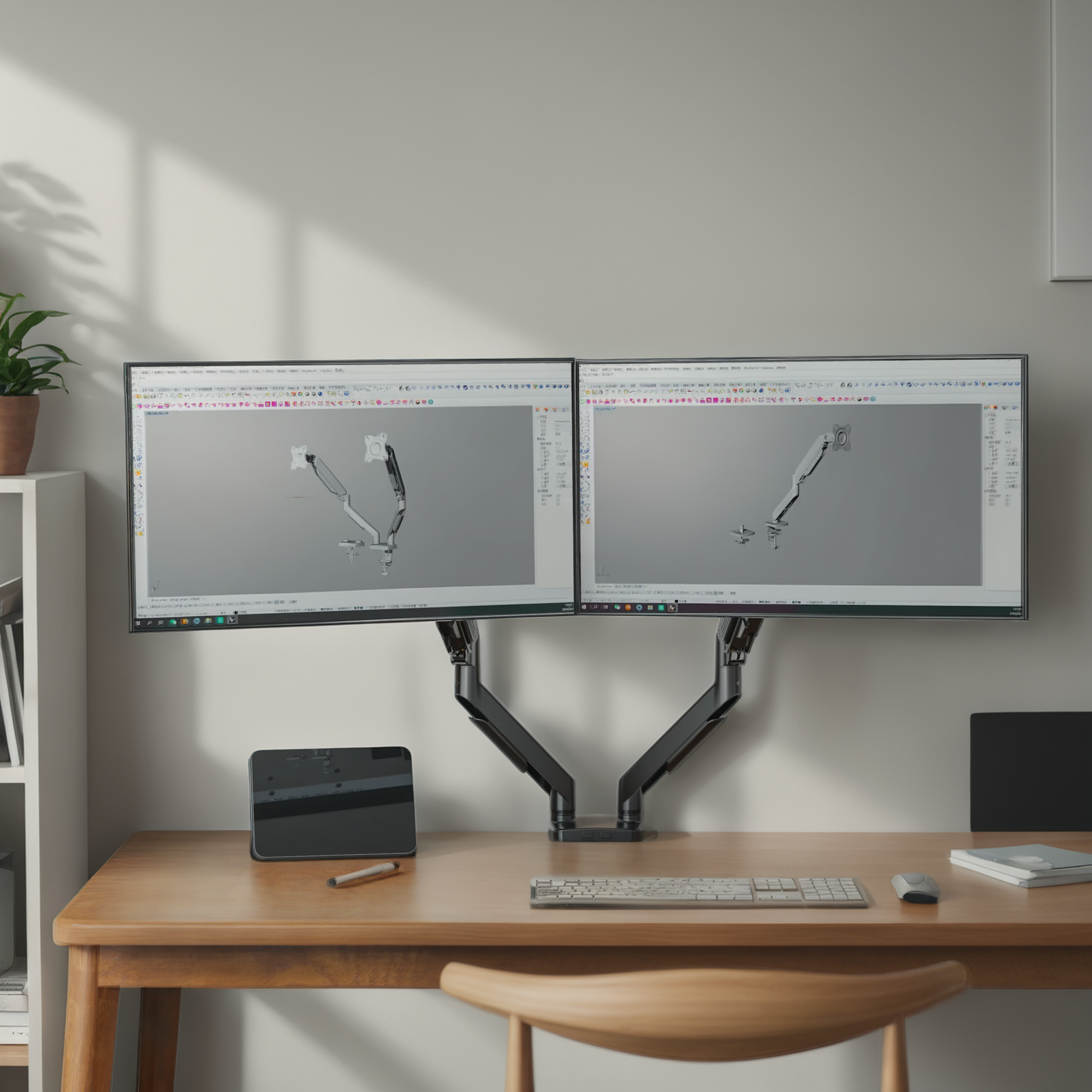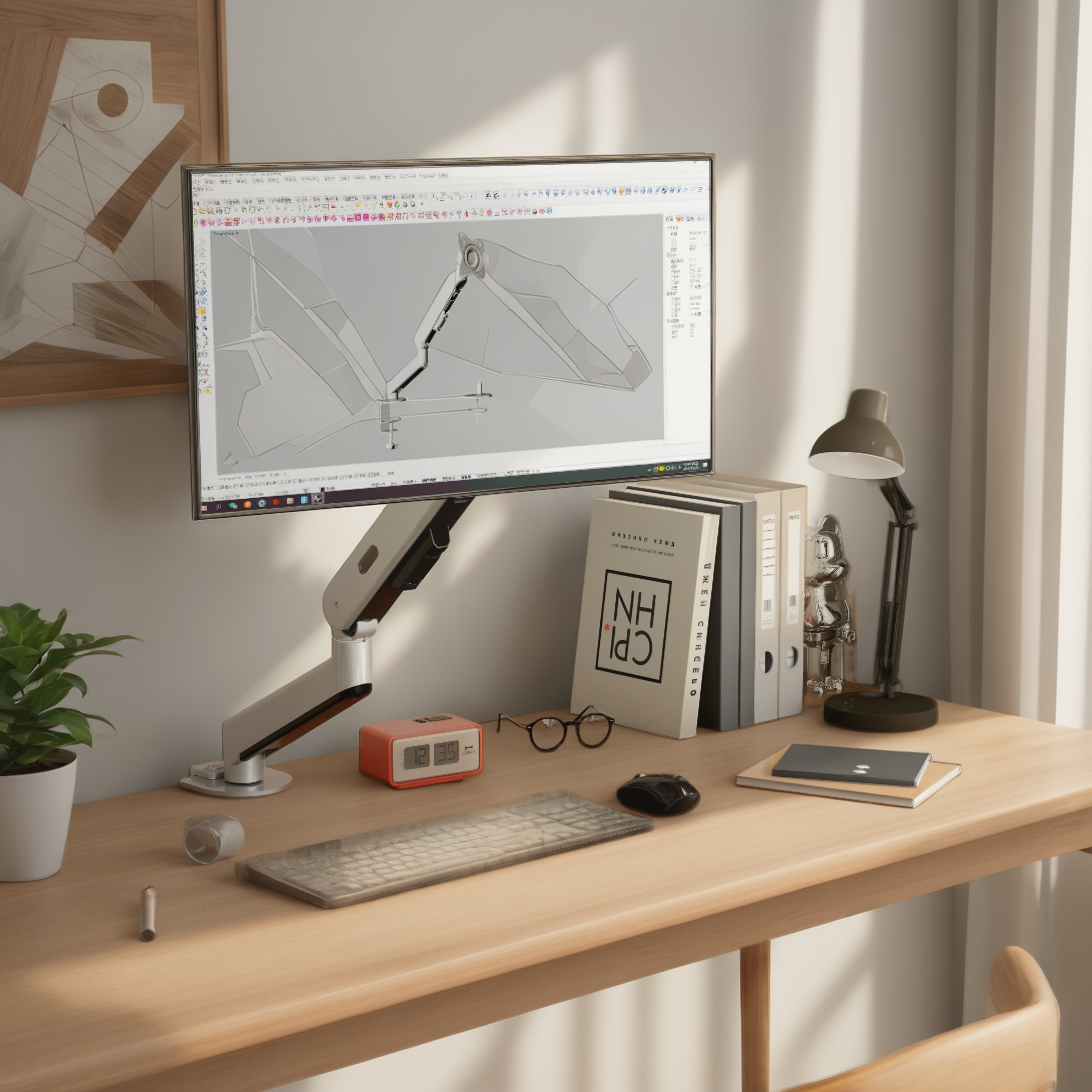
The Ideal Workstation Layout for Developers
For developers, work doesn’t just happen at the desk—it revolves around it. Hours of debugging, coding, and context-switching require not just skill, but a physical environment that doesn’t silently wear down the body.
Yet many developers settle for cramped laptops, mismatched monitors, and makeshift stands. Over time, these lead tochronic fatigue, neck strain, and workflow friction—issues that slow you down before you even realize it.
The Reality: Common Developer Workspace Struggles
Based on user feedback and survey data from Stack Overflow and developer forums, here are some of the most reported workstation issues:
-
"My neck and shoulders hurt by the end of the day."
Most developers unknowingly adopt a forward head posture due to low screen positioning. -
"I waste time juggling browser tabs and IDEs."
Lack of screen space or dual-screen misalignment breaks workflow rhythm. -
"I don't have room on my desk anymore."
Bulky monitor bases, cables, and gear eat into workspace, limiting movement and note-taking.
These issues aren’t just uncomfortable—they're productivity killers.
A study published inApplied Ergonomics(2017) found that poor workstation setup can reduce sustained attention byup to 27%over long sessions.
Key Principles of a Developer-Centric Workstation
1. Align Screen Height with Eye Level
A misaligned monitor pulls the neck forward, increasing spinal pressure.
OSHArecommends placing the top third of your screen at or slightly below eye level to maintain natural posture.
Tip: Alingshang monitor armallows you to fine-tune vertical position and tilt angle, especially when using multiple screens.
2. Prioritize Dual-Screen Efficiency
Most developers run multiple apps side by side: IDE, browser, docs, terminal.
Without aligned dual screens:
-
You waste time resizing windows
-
Your neck rotates frequently, creating strain
-
It’s harder to maintain focus on code and output simultaneously
With lingshang dual monitor arms, you can:
-
Align both screens horizontally and vertically
-
Easily rotate one screen for portrait terminal mode
-
Create a seamless side-by-side workspace
3. Reclaim Desk Space and Reduce Clutter
A cluttered desk isn’t just distracting—it prevents physical ease and blocks creativity.
-
Remove monitor bases from the desk surface
-
Mount screens tofree up 30–40%more usable space
-
Use integrated cable routing to keep wires off your workspace
Result: A cleaner desk that supports writing, sketching UI, or resting your wrists comfortably.
4. Support Healthy Posture for Long Sessions
Developers often sit for extended blocks without breaks. Without proper posture, this leads to:
-
Neck and shoulder tension
-
Wrist discomfort
-
Lower back stiffness
Self-adjustment tips:
-
Use a chair with lumbar support
-
Keep feet flat on the ground
-
Position keyboard and mouse at elbow level
Then let lingshang arms do the rest—they move with your workflow, reducing manual strain.
Investing in the Right Tools Pays Off
Ergonomics isn’t just about comfort—it’s a multiplier for mental clarity and deep focus.
Lingshang monitor arms and desk accessories are purpose-built for developers, offering:
-
Precision adjustability
-
Robust dual-monitor support
-
Desk surface optimization
-
Sleek design to reduce distraction
If you spend 40+ hours a week at your desk, make sure it works for you—not against you.
Start Building Your Ideal Setup
Ready to upgrade your development environment?
Explore ergonomic tools at ourHomepage
Need tailored advice for your space or workflow?
Visit ourContact Us pageand we’ll help you design a setup that fits your coding life.

